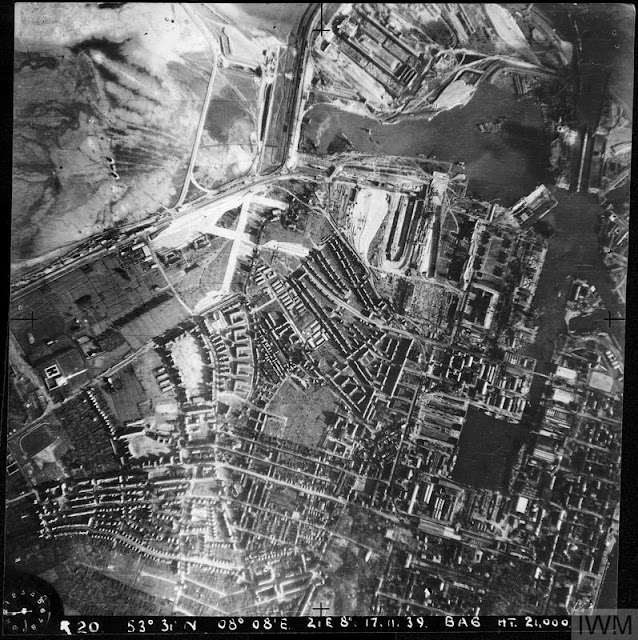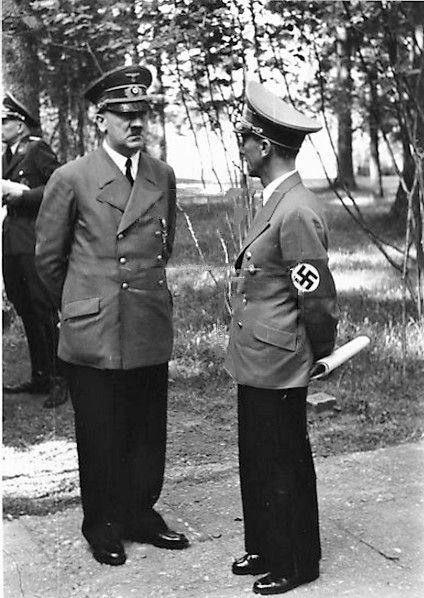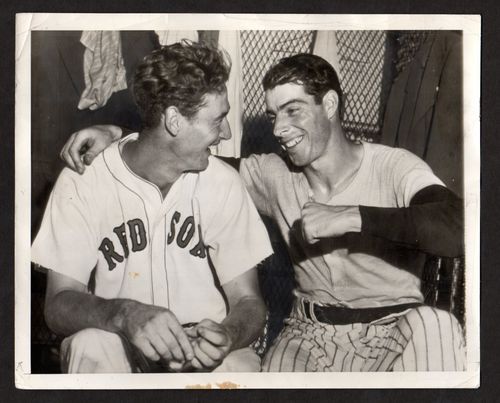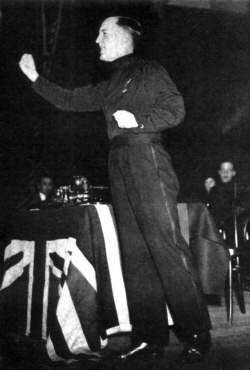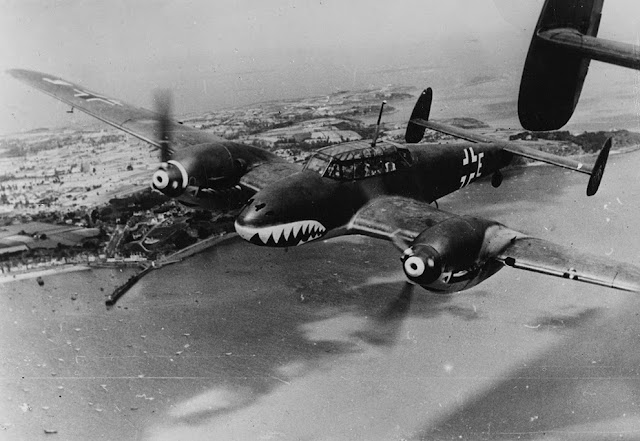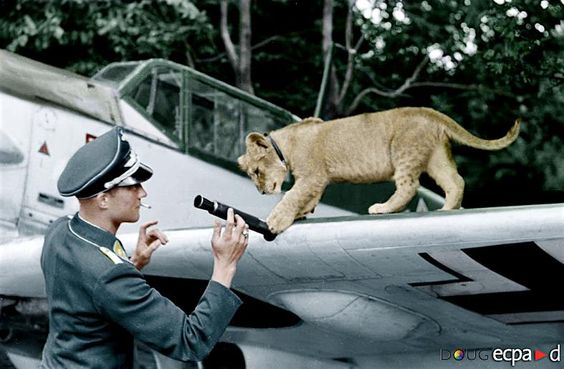Wednesday 5 February 1941
 |
| This is the Focke-Wulf Fw 200 Condor that crashed in Ireland on 5 February 1941. |
East African Campaign: Today,
5 February 1941, generally is considered the start of the Battle of Keren.This is one of the hardest-fought battles during the war south of the North African desert and salvages some of the Italian military honor lost in Libya and Albania.
The 11th Indian Brigade of the 4th Indian Division now has had time to reconnoiter the area around Keren, Eritrea. Its commander decides not to wait for the main force to arrive from Agordat and instead attack straightaway. Attacking from the left of the Dongolaas Gorge (the gateway to Keren), the 2nd Queen's Own Cameron Highlanders quickly take a key ridge (feature 1616, Cameron Ridge) near Mt. Sanchil (overlooking the Gorge) and appear nicely positioned to occupy the higher peaks (Sanchil and Brig's Peak) which dominate the Gorge the next day. Once in possession of those, the British would be able to sweep the Gorge with gunfire and completely break the Italian defenses.
However, the Italians still occupy the high ground nearby, particularly to the right of the pass. These positions remain well-defended and stocked with ample supplies. The most advanced British troops, meanwhile, are forced to bring their supplies over an exposed hill of up to 1500 meters to their positions on the ridge, under the watchful gaze of the Italians on the peaks nearby. More British troops are approaching on the road from Agordat, so resumption of attacks appears likely on the 6th, but this first British attack accomplishes less than it seems due to the Italians' still-dominant possession of the high ground.
The British, anticipating total victory in Libya, name Henry Maitland Wilson as the Military Governor and General Officer Commanding Cyrenaica.
European Air Operations: The RAF sends a Circus raid of 12 Blenheim bombers with a heavy fighter escort to attack St. Omer. The Luftwaffe is ready and waiting and shoots down nine of them. It is a stunning setback for the RAF and its new offensive philosophy. The Luftwaffe, meanwhile, continues its random attacks on various parts of eastern England, with a small raid against London after dark.
In an extremely odd incident, a Luftwaffe KG 40 Focke-Wulf Fw 200 Condor crashes into a mountain near Dunbeacon, West Cork, apparently after getting lost. Local nurse Mary Nugent is on the scene quickly and finds the plane in flames. Five of the crew are dead, but one of the plane's crew, radio operator Max Hohaus, is alive, though trapped in the plane. Mary and her brother drag Hohaus out of the plane, saving his life despite his massive burns and a broken leg. The Red Cross takes care of him and eventually repatriates Hohaus to Germany.
Well, all that is not all that unique, as planes crashed in Ireland many times during the war. The odd part is that the Germans are very grateful to Mary for saving the crewman's life. The Luftwaffe later arranges to present her with a medal for bravery personally signed by Adolf Hitler. Thus, Mary Nugent becomes the only Irish native decorated during the war by the Wehrmacht.
Volunteer American unit Eagle Squadron becomes operational. It is to aid the RAF against the German in Great Britain.
 |
| Mary Nugent, the Irish lady who received a special commendation signed personally by Adolf Hitler. |
Battle of the Atlantic: German battlecruisers Scharnhorst and Gneisenau continue into the Atlantic. They are heading further west than the British expect them to, with a scheduled rendezvous with a tanker south of Cape Farewell, Greenland. After topping off their fuel tanks there, the two German ships will be excellently positioned to wreak devastation on the Allied convoys passing just to the south.
Royal Navy submarine HMS Sealion torpedoes and sinks 1151-ton Norwegian freighter Ryfylke just north of Kvitenaes Point near Stadlandet, Norway. Fellow freighter Christian Bugge picks up all 45 men from the Ryfylke.
The Luftwaffe bombs and sinks Royal Navy 641-ton anti-submarine trawler HMT Tourmaline near North Foreland, Kent.
The Luftwaffe also bombs and sinks 3734-ton Greek freighter Ioannis M. Embiricos in the North Sea. Everybody survives.
British 7939-ton freighter Politician hits the rocks off Roshinish Point on the Island of Eriskay in the Hebrides. The ship is wrecked on the rocks, though it is later refloated to help salvage it. This is a fairly famous wreck for the region because the ship, in addition to RAF and army stores and some general merchandise, is carrying 22,000 cases of Scotch Whisky. Evidently, the locals have quite a time with the whiskey, and this incident becomes the subject of the 1947 book "Whisky Galore" by Compton Mackenzie. Some whiskey bottles from the wreck have been kept through the years as keepsakes.
Another British ship also runs aground. This is the 7457-ton Empire Breeze, which comes to grief at the Bondicar Rocks near Amble, Northumberland. However, the seas are kind to the Empire Breeze, and the ship is refloated and repaired.
The Royal Navy sinks 5046-ton British ship Minnie de Larinaga at Dover as a blockship.
Convoy OG 52 departs from Liverpool.
US submarine USS Finback is laid down.
U-563 is launched.
 |
| Italian troops during the battles around Benghazi, on or about 5 February 1941. |
Battle of the Mediterranean: Combe Force, under the command of Lieutenant General John Combe of the 11th Hussars Regiment, resumes its advance from Msus during the day. As part of his force, Combe has a squadron of the King's Dragoon Guards and the RAF Armoured Car Squadron. Just after noon, the Combe Force trucks reach the Via Balbia main road south of Benghazi. There are no Italians there, so the British fear that they were too late; however, in fact, they arrive just in the nick of time. The British setup roadblocks at Sidi Saleh, some 48 km southwest of Antelat. The tanks of the 7th Armored Division are lagging behind, so the initial block is minimal. Combe Force has crossed 150 miles of desert in just 30 hours.
About half an hour later, the Italian 10th Army shows up, driving from Benghazi toward Tripoli without seemingly a care in the world. Their advance vehicles hit mines laid by Combe Force, stopping the entire convoy. After a few scattered attacks by the 10th Bersaglieri, the British 4th Armoured Brigade arrives with its 29 cruiser tanks and the Italians give up for the day. Rather than mount a major attack to break through, the Italians encamp for the night and prepare to attack in the morning. The day ends with the relatively small (but well-armed) Combe Force of about 2000 men, reinforced with the tanks of the 4th Armoured Brigade, blocking the road against about 5,000 Italian troops, who are equipped with 107 tanks and 93 guns. The Italians spread out on both sides of the road looking for an escape route, but there is nowhere to go.
The Australians, meanwhile, are advancing on the Italians from the rear, effectively surrounding the Italian troops with the Jebel Akhdar (Green Mountain) on one side and the sea on the other. They take Barce, sealing off the north, while the terrain to the south is rough and not suitable for a breakout - which in any event is in the direction of approaching British reinforcements. This collectively becomes known as the Battle of Beda Fomm.
Mines remain a problem at Tobruk Harbor despite frantic British attempts to sweep it. A motor schooner hits a mine and sinks, killing the Assistant King's Harbour Master for Tobruk, Lt. Commander Cochrane.
The Luftwaffe's mining of the Suez Canal scores another victim today, with 5060-ton British freighter Ranee sinking. There are nine deaths. Part of the wreck is salvaged for Royal Navy use.
The Italians, abandoning Benghazi, scuttle 2532 ton freighter Snia Amba in the Harbour. It sinks in shallow water and later is refloated.
The Italians send a major convoy of four large troop transport ships from Naples bound for Tripoli.
Applied Science: General Walter Dornberger, an artillery officer who has been working closely with Wernher von Braun, is told to focus on research and development of rockets, not production. This is a sign of extreme confidence by Hitler that the Reich is not in any jeopardy. Neither the V-1 flying bomb nor the V-2 ballistic missile is ready for production yet anyway.
 |
| RAF Draft No. 6 in Sydney embarks on 5 February 1941 (Australian War Memorial). |
German/Italian Relations: Hitler writes a letter to Mussolini. In it, he praises the work of Italian officers in North Africa and offers to send a division to North Africa on the condition that the Italians hold their positions there.
German/Danish Relations: Under intense pressure, the Danes give the Germans six new torpedo boats. Technically, the Danes have not been conquered by the Germans and retain their own form of government. In practice, though, Denmark essentially is a German possession, albeit one that retains its king and government. It is less than a satellite and more than a Protectorate.
US/Anglo Relations: President Roosevelt's special envoy, Republican Wendell Willkie, winds up his visit to Great Britain. He makes a statement for distribution to Germany:
I am proud of my German blood, but I hate aggression and tyranny, and I now tell the German people that my convictions are fully shared by the overwhelming majority of Americans of German descent. They, too, believe in freedom and human rights. We German-Americans reject and hate aggression and the lust for power of the present German government.
US Military: General Walter C. Short is in Hawaii to command the US Army's Hawaiian Department. Short basically is in control of all aspects of Hawaii's defense except naval units (army, air force, antiaircraft forces).
 |
| Aerial photo of the crash site of the B-18A Bolo bomber that crashed in the mountains on January 16th after taking off from McChord Field. Investigators said the cause of the crash was pilot error. Two woodsmen notified the Lewis County Sheriff that they had found the wreck on February 3rd. This photo was taken near Deschutes Peak, Snoqualmie National Forest, February 5, 1941 (Seattle Post Intelligencer). |
Australian Government: Prime Minister Robert Menzies resumes his lengthy journey from Melbourne to London. He flies from Gaza to Lydda (Lod). Reflecting on recent Italian reversals in Libya, he makes a fairly common military assessment for the period in his diary, namely that "One German is worth 15 Italians."
British Government: Prime Minister Winston Churchill continues his efforts to shape the news flow. He sends a letter to Cecil King, director of the Daily Mirror, urging him not to "try to discredit and hamper the Government in a period of extreme danger and difficulty." Instead, he urges King to have his paper focus on British "war aims."
The War Cabinet approves Royal Navy interceptions of Italian convoys proceeding down the Tunisian coast. These ships are traveling in French territorial waters. Heretofore, the area has been off-limits (unlike the areas near Gibraltar).
Occupied Europe: The Germans begin standardizing the currency on the Continent. They eliminate the Luxembourgish and Belgian francs and replace them with the Euro, er, Reichsmark.
China: Japanese 11th Army torches Nanyan and occupies Tangho.
Australian Homefront: The author of "Waltzing Matilda," Andrew Barton "Banjo" Paterson, passes away in Sydney, New South Wales.
Separately, the Australian Women’s Australian Auxiliary Air Force (WAAAF) established.
British Homefront: The Ministry of Defence and the RAF sponsors the Air Training Corps (ATC), a successor to the Air Defence Cadet Corps (ADCC). The ATC is a British youth organization, composed primarily by volunteers, intended to give cadets some experience with aviation. King George VI agrees to be the air Commodore-in-Chief, issuing a Royal Warrant for it. The ATC is an instant success
Future History: Stephen J. Cannell is born in Los Angeles, California. Stephen begins selling scripts to Universal in 1968, which hires him to write scripts for series like "Ironside" and "Columbo," and soon lands a full-time job as Jack Webb's story editor on "Adam-12." After that, Stephen J. Cannell goes on to create or co-create (writing pilots for lucrative compensation) about three dozen series, including World War II-themed "Black Sheep Squadron" (which focuses on the adventures of Pacific ace Gregory "Pappy" Boyington. His last huge success is "The Commish," which airs from 1991-1996, and after that takes only some occasional acting gigs and writes novels (including the Shane Scully series). Stephen J. Cannell passes away on 30 September 2010 from melanoma and is interred at Forest Lawn.
David Lynn Selby is born in Morgantown, West Virginia. He becomes famous for playing Quentin Collins in "Dark Shadows" (1969-71). He later stars as Richard Channing in "Falcon Crest" and stars in other series. David Selby remains active in the business as of this writing.
 |
| The War Department Air Corps, Materiel Division performs flight tests at Wright Field, Dayton, Ohio on the P-39 (Bell YP-39) and submits its results of the findings today, 5 February 1941. The report finds that top speed is 368 mph, it can reach 20,000 feet in 7.3 minutes, and that "the P-39 should not be spun intentionally under any circumstances." The overall tenor of the report is that the Allison V-1710-35 engine has serious issues. |
February 1941 February 1, 1941: US Military ReorganizationFebruary 2, 1941: Wehrmacht SupermenFebruary 3, 1941: World Will Hold Its BreathFebruary 4, 1941: USO FormsFebruary 5, 1941: Hitler Thanks Irish WomanFebruary 6, 1941: Operation SunflowerFebruary 7, 1941: Fox Killed in the OpenFebruary 8, 1941: Lend Lease Passes HouseFebruary 9, 1941: Give Us The ToolsFebruary 10, 1941: Operation ColossusFebruary 11, 1941: Afrika KorpsFebruary 12, 1941: Rommel in AfricaFebruary 13, 1941: Operation CompositionFebruary 14, 1941: Nomura in WashingtonFebruary 15, 1941: Churchill's WarningFebruary 16, 1941: Operation AdolphusFebruary 17, 1941: Invade Ireland?February 18, 1941: Panzerwaffe UpgradeFebruary 19, 1941: Three Nights BlitzFebruary 20, 1941: Prien's FarewellFebruary 21, 1941: Swansea Blitz EndsFebruary 22, 1941: Amsterdam PogromFebruary 23, 1941: OB-288 Convoy DestructionFebruary 24, 1941: Okuda SpiesFebruary 25, 1941: Mogadishu TakenFebruary 26, 1941: OB-290 Convoy DestructionFebruary 27, 1941: Operation AbstentionFebruary 28, 1941: Ariets Warns Stalin2020









